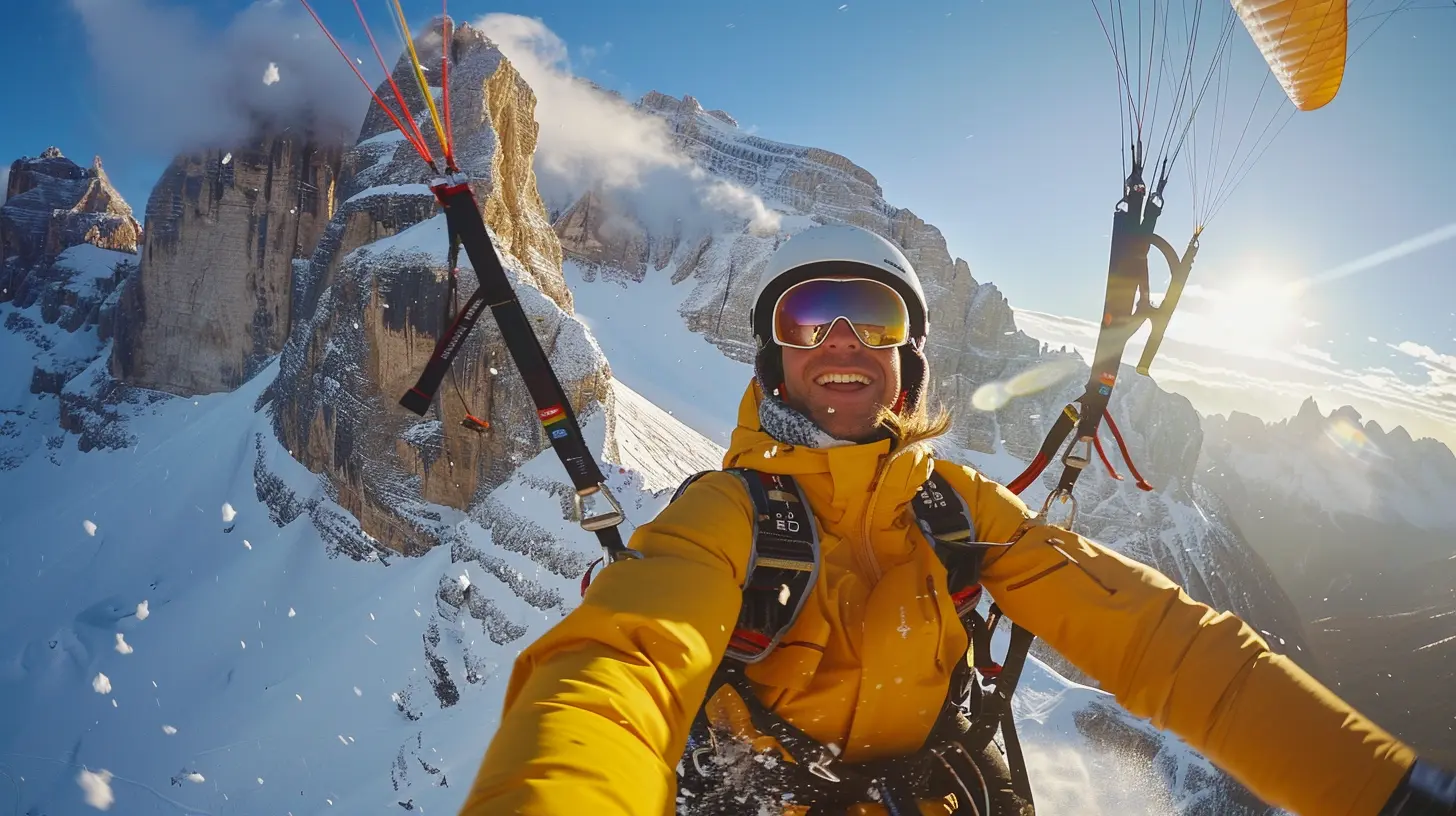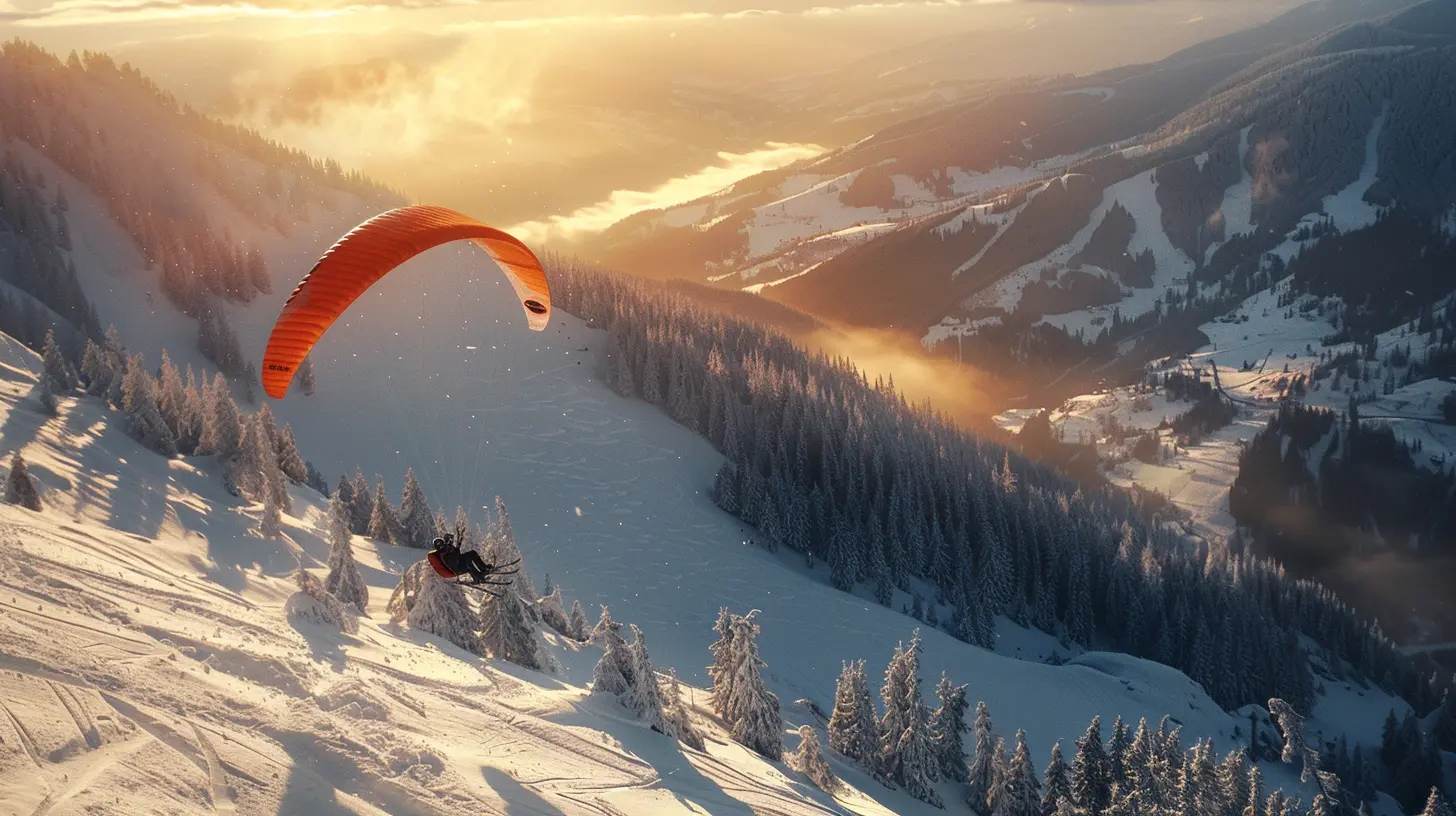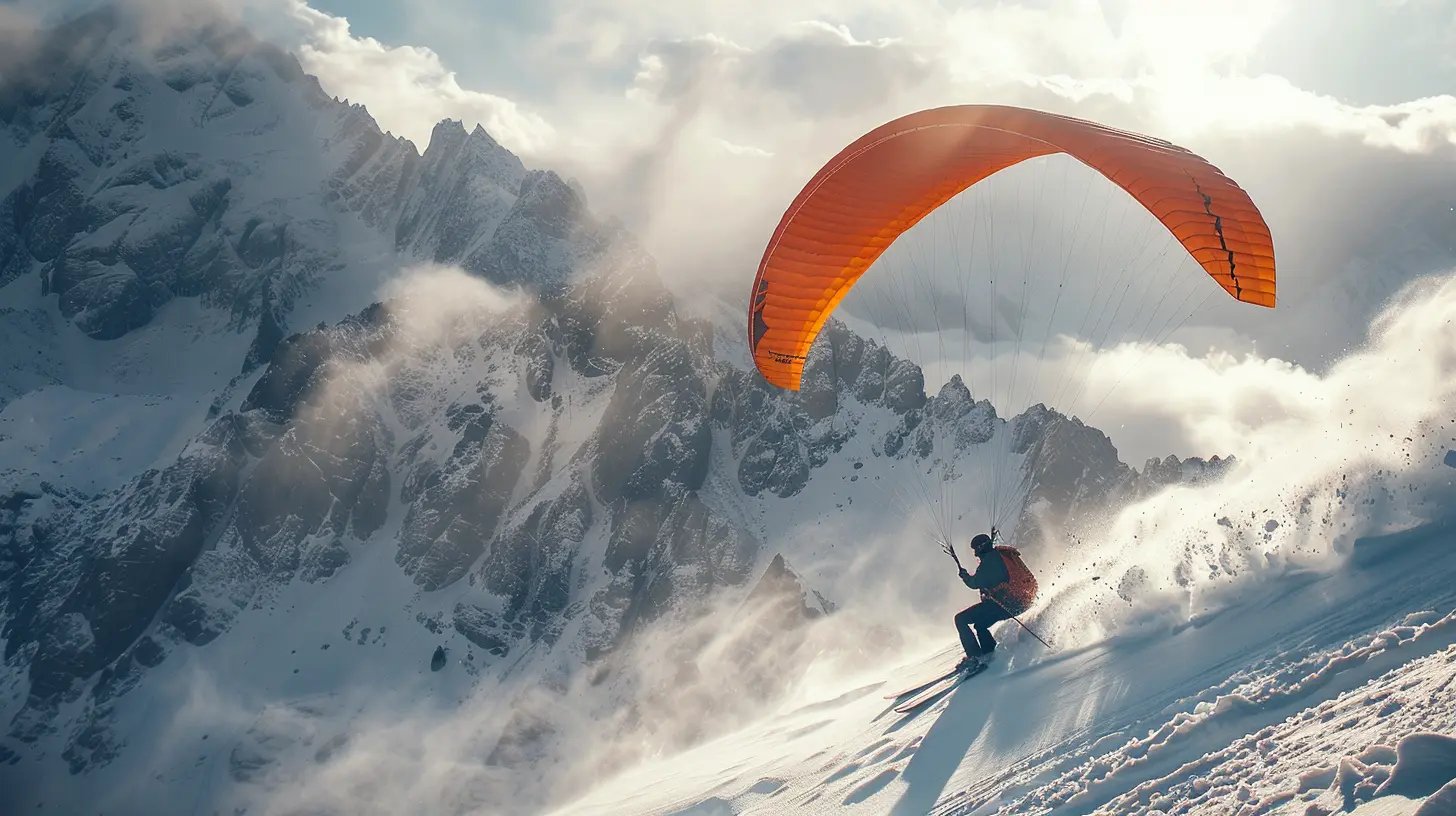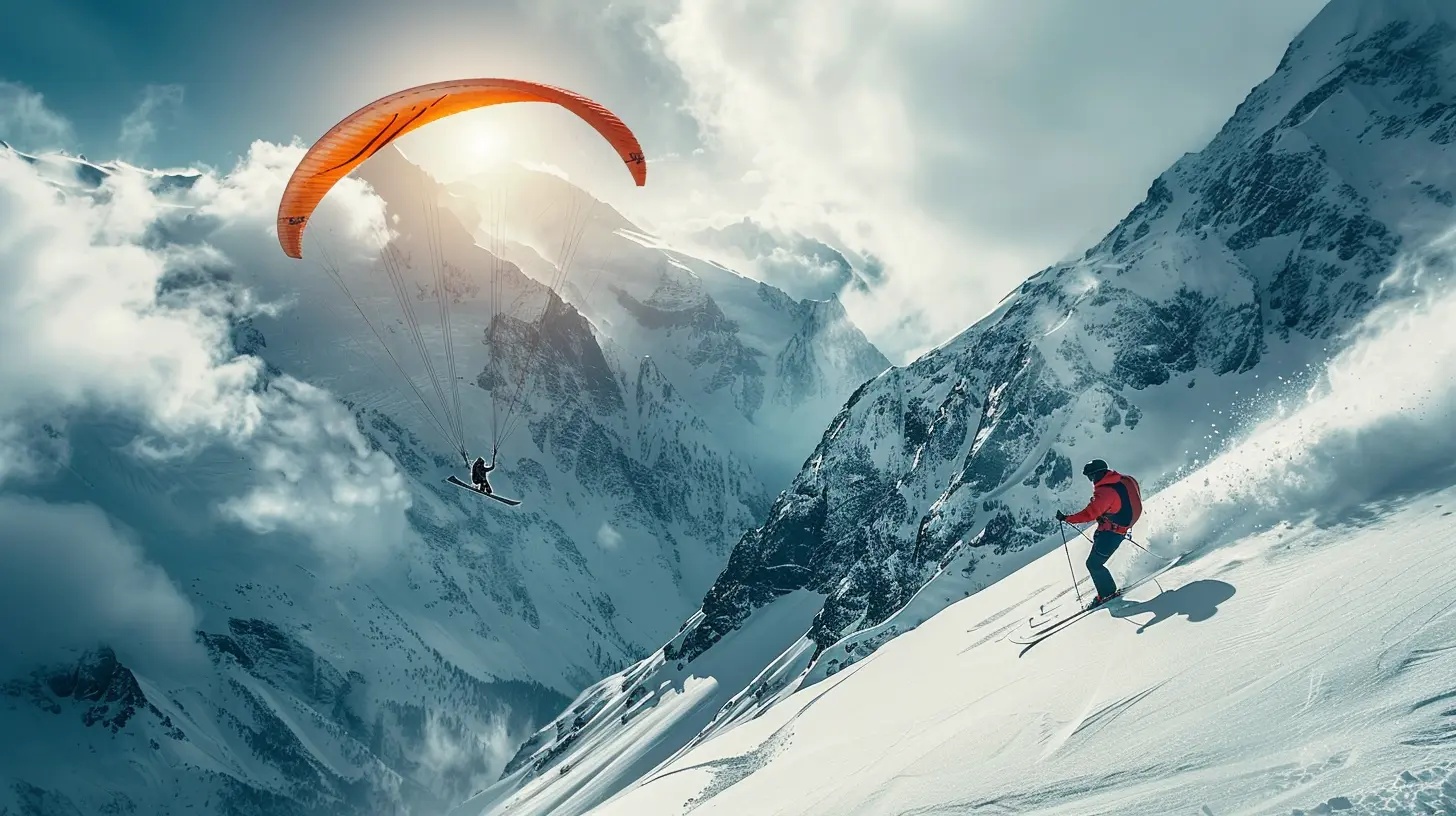Speedflying: Combining Paragliding and Skiing for the Ultimate Rush
29 July 2025
Imagine flying down a snowy mountain slope at breakneck speed. Now, imagine doing it with a parachute overhead, letting you glide, soar, and skim inches above the terrain like some kind of winter superhero. Sounds insane? Welcome to the exhilarating world of speedflying—a sport that brings together the high-speed thrill of skiing and the graceful float of paragliding.
Grab your helmet (and maybe an extra pair of underwear)—we’re going full throttle into this adrenaline-pumping mashup.
What in the World is Speedflying?
Think of speedflying as the lovechild of paragliding and skiing. It’s fast. It’s crazy. And it’s not for the faint of heart.Unlike traditional paragliding, which is all about catching thermals and cruising lazily through the skies, speedflying is designed for maximum velocity. You’re skiing down a mountain with a small, agile wing that provides just enough lift to fly—but not enough to keep you airborne for long stretches. The result? You swoop. You bounce. You skim. You fly. You live a little louder.
Does it sound like madness? Well, that’s kind of the point.
The Origin Story: Who Thought This Was a Good Idea?
Speedflying popped onto the scene in the early 2000s, when a group of thrill-seeking alpine adventurers decided skiing down mountains just wasn’t exhilarating enough. Nope, they wanted to add flying into the mix.Born in the French Alps (because of course it was), the sport quickly gained traction among extreme sports lovers looking for new ways to flirt with danger—and Mother Nature.
In the beginning, it was pretty underground. But like all good things that involve risk, death-defying stunts, and snowy peaks, speedflying started to go mainstream with specialized equipment, training schools, and even competitions.
How Does It Work? (Without Dying, Preferably)
So, let’s break it down. You’ve got three ingredients:1. A steep mountain slope
2. A pair of skis
3. A speed wing (a smaller, faster version of a paraglider wing)
Once you’re strapped in, you launch from a steep slope—not from the top of a cliff like BASE jumping. You start skiing, gain speed, and then your wing catches the air, giving you lift. But this isn’t a leisurely parachute ride. The wing is tiny compared to a standard paraglider, meaning you're not floating so much as rocketing close to the ground.
Think of it like being in a high-speed game of tag with gravity. You're just barely ahead.
You alternate between flying and skiing, depending on terrain and airspeed, weaving through trees, dodging rocks, and carving up powder at 40 to 80 mph. Yes, 80 mph. That’s not a typo.
Who Is Speedflying For?
Let me be real with you—it’s not for couch potatoes or people afraid of heights. If your idea of excitement is watching snow fall from the warmth of a ski lodge with a hot cocoa in hand, this sport might send you into cardiac arrest.But if you’re the kind of person who:
- Gets bored on chairlifts
- Finds skiing "too chill"
- Has always wanted to parkour down a mountain
- Laughs in the face of gravity
Then speedflying might just be your soulmate.
That said, there’s a learning curve. Most speedflyers are already experienced skiers or paragliders—ideally both. You need to be able to handle rapid decisions, unpredictable winds, and changing snow conditions while airborne.
Gear Up: What You Need to Speedfly
Speedflying may look like a beautiful dance with nature (and it is), but it’s also gear-heavy. Here’s a rundown of what keeps you from face-planting into the side of a mountain.1. Speed Wing
Your ticket to flight. These wings are small, maneuverable, and built for speed over lift. They come in various sizes depending on your skill level, weight, and how much trouble you want to get into.2. Harness
A hybrid between a paragliding harness and a ski harness. It keeps you attached to the wing and also gives you the freedom to transition between skiing and flying.3. Skis
You’ll want lightweight, short skis. Freestyle or all-mountain skis are ideal—they help with quick turns and terrain adaptation.4. Helmet and Protective Gear
Let’s face it—speedflying is not exactly knitting class. A good helmet (preferably a full-face one), padded clothing, and back protection are must-haves.5. Reserve Parachute
You hope you’ll never need it, but if things go south (literally), your reserve chute is your best friend.Safety First—Seriously
Speedflying is a blast, but it’s also dangerous. (Yeah, shocker, right?)Here’s what smart speedflyers always remember:
- Train Properly: Don’t just YouTube a launch and wing it (pun intended). Take lessons from certified instructors.
- Check the Weather: Wind, snow, and visibility are all crucial. A gust at the wrong time can turn an epic flight into a disaster.
- Know the Terrain: You’re flying close to the ground. That tree you almost hit? You’ll want to know it’s there ahead of time.
- Respect Limits: The rush is addictive, but don’t push beyond your skill level. The mountain does not care about your ego.
The Best Places to Speedfly
You can’t exactly launch from your backyard (unless you happen to live on a powder-packed cliff), so where should you go?1. French Alps – Chamonix
This is where it all began. Big mountains, steep slopes, and plenty of altitude make it a speedflyer’s dream come true.2. Switzerland – Lauterbrunnen
Known as the "Valley of Death" in BASE jumping circles, it's also paradise for experienced speedflyers.3. USA – Jackson Hole, Wyoming
Rocky Mountain vibes, gnarly lines, and some of the most breathtaking scenery you can imagine.4. New Zealand – Queenstown
Because when you’re flying 10 feet above solid granite, you at least want it to be jaw-droppingly gorgeous.Getting Started: So You Want to Be a Speedflyer?
Ready to embrace your inner snow-powered bird? Here’s your game plan:1. Learn to Ski (Well): You’ve gotta be confident on steep, challenging terrain.
2. Take a Paragliding Course: Get comfy with wings, lift, air currents, and how not to die.
3. Find a Speedflying School: There are instructors and schools in Austria, France, and the U.S. that specialize in teaching this hybrid art.
4. Start Small: Begin with easy terrain and low speeds. Build your skills before you go full superhero mode.
Most importantly? Stay humble. Speedflying may look effortless on Instagram reels, but every swoop, carve, and lift takes practice, patience, and, well, a touch of insanity.
Is Speedflying a Sport or a Lifestyle?
Great question. And honestly, it’s both.For many, speedflying becomes more than a winter hobby—it’s a way of thinking. A way of living on the edge while feeling completely present and alive. You’re not just tackling gravity on skis; you’re dancing with it, negotiating with it, challenging it.
It’s zen meets chaos. Art meets adrenaline. Maybe even temporary insanity meets sheer brilliance.
Final Thoughts: Is Speedflying Worth the Hype?
Look, if you’re still reading, chances are you’re at least speed-curious. And why not?Speedflying takes two epic sports and fuses them into an experience that defies logic, physics, and sometimes gravity. It’s not for everyone—but for those who crave the rush, it offers a freedom that’s hard to put into words.
You’re skiing, flying, floating, soaring, and doing it all your way. There's no trail, no lift ticket, no rulebook—just you, your wing, and the mountain.
So, is it worth the hype?
Only one way to find out...
all images in this post were generated using AI tools
Category:
Extreme SportsAuthor:

Uziel Franco
Discussion
rate this article
1 comments
Lena Potter
Speedflying uniquely blends the thrill of skiing with the freedom of paragliding, offering adrenaline seekers an exhilarating experience that pushes the limits of adventure.
August 10, 2025 at 2:47 AM

Uziel Franco
Thank you! Speedflying truly does capture the essence of adventure, merging the best of both skiing and paragliding for an unmatched thrill.

![Breaking Records and Barriers: [Player Name]s Historic Season](/pictures/blog/small/breaking-records-and-barriers-player-names-historic-season_1.webp)
![The Ultimate Competitor: How [Player Name] Thrives Under Pressure](/pictures/blog/small/the-ultimate-competitor-how-player-name-thrives-under-pressure_1.webp)